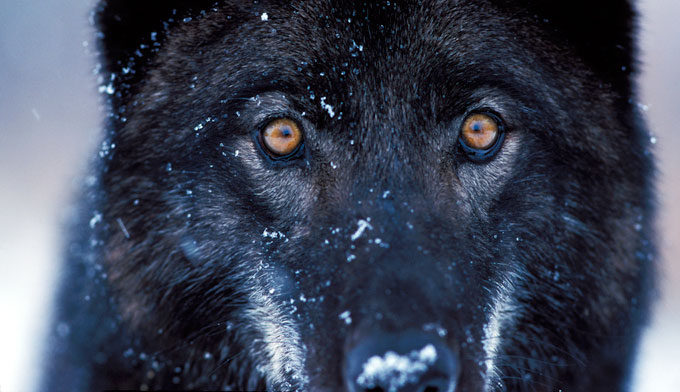Reintroducing long-lost species to our environment could be the key to conserving our heritage
When I studied ecology 30 years ago, it felt like an old subject. It seemed as if there was little left to discover. Today, it feels like a young subject; one being turned upside down – literally – by some of the most exciting scientific findings of the past half-century.
The old assumption was that food chains were controlled from the bottom up. The climate and the soil determined the nature of the vegetation; that, in turn, determined the herbivore population, whose numbers then governed the population of carnivores. But ecologists around the world have been discovering trophic cascades: ecological processes tumble from the top of an ecosystem to the bottom.
The classic example is what happened in the Yellowstone National Park in the US when wolves were reintroduced in 1995- Until then, many parts of the park were almost bare. But as soon as the wolves arrived, this began to change. The deer avoided the places – particularly the valleys and gorges – where they could be caught most easily.
The results are astonishing. In some places, the trees quintupled in height in just six years, filling the bare valleys with forest. As a result, the number of songbirds has increased. As the bankside forests have expanded, so has the population of beavers. Like the wolves, they are ecosystem engineers, enhancing opportunities for other species to thrive. By building their dams, they have created niches for otters, muskrats, fish, frogs and reptiles. Bears, eagles and ravens thrive on the carrion the wolves abandon, and hawks, weasels, foxes and badgers have proliferated as the wolves kill coyotes.
The rivers have also changed, forming new pools and riffle sections, causing less erosion, because the returning trees have stabilised their banks. Erosion of the soil on the hillsides has slowed as the vegetation that holds it in place has begun to recover. The wolves have transformed not only the ecosystem, but also the park’s physical geography.”
Trophic cascades present a radical challenge to the British model of conservation. Conservation ists in places such as the UK have tried to cling onto the ecological fragments we retain, and to prevent them from changing. This has consequences that sometimes seem perverse.
For example, when Geologists visit the tropics, they lament the landscapes, often consisting of coarse grass or low wiry vegetation, that develop as a result of repeated cutting and burning. We call on tropical nations to stop cutting and burning, to protect the forests that support a much greater diversity of life. But when ecologists in Britain raise their eyes to the hills and see miles and miles of coarse grass and the low wiry vegetation we call heather moorland, they say: “That’s what we need to preserve!” And they do it by… repeated cutting and burning.
They have forgotten that the hills were once forested. There is a name for this forgetting: shifting baseline syndrome. This means that we conceive as natural and normal the living systems that prevailed in our own youth. With every generation, the baseline of normality shifts. When you consider that, just a blink away in evolutionary terms, our ecosystem in Britain was dominated by elephants, rhinos, hippos, lions and hyenas, you begin to understand how much we have forgotten.
While bringing the mega fauna back to Britain might be a bit much to ask, I believe we can start to re-establish some of the medium-sized animals that drive ecological processes, such as beavers, wild boar, lynx and wolves. These are ‘keystone species’: their ecological impact is greater than their numbers alone would suggest. All of them create opportunities for other wildlife to thrive. And all, to my mind, re-enchant our wild places, infusing them with the delight and wonder we now travel halfway round the world to experience.
Bringing back missing species and restoring broken ecosystems is a process known as rewilding. Its aim is to kickstart ecology’s dynamic interactions. Those of us who wish to see it happen must persuade people who live and work on the land – and those who visit – that this is a better option than Listing uses. There are some places where these arguments can be more easily won than others. For example, deer estates and grouse moors inflict tremendous ecological damage, while losing money. Sheep farming in the hills is so unproductive that it relies entirely on public subsidies, which surely cannot last foerever. In these cases, keeping the hills bare is manifestly failing to sustain rural communities and exacerbates the risk of floods downstream.
It would not be hard to demonstrate that people would be prepared to pay more to watch wildlife than they pay for the tiny amount of meat the hills produce. Or, indeed, to make the case for a continuation of public subsidies, but only if they deliver social goods rather than social harms. Rewilding envisages the minimum of human intervention: planting a few islands of trees where the seed banks are too far away, releasing enough missing animals to establish viable populations, then stepping back and letting nature do the rest.
We do not know exactly what ecosystems will develop; in our changed climate they will not be the same as those we had in the past. But they are likely to be more diverse and more dynamic than those now pickled by conservation. The existing model is about the past: keeping landscapes in a state of arrested development. Rewilding is about the future: an open-ended process that will continue to produce ecological surprises that fill our world with wonder. “A few of us are setting up a group called Rewilding Britain, seeking to catalyse this process. We want to develop in this country a positive environmentalism: one driven by the hope of better future, rather than only by the fear of a worse one.
By George Monbiot for the RSA

